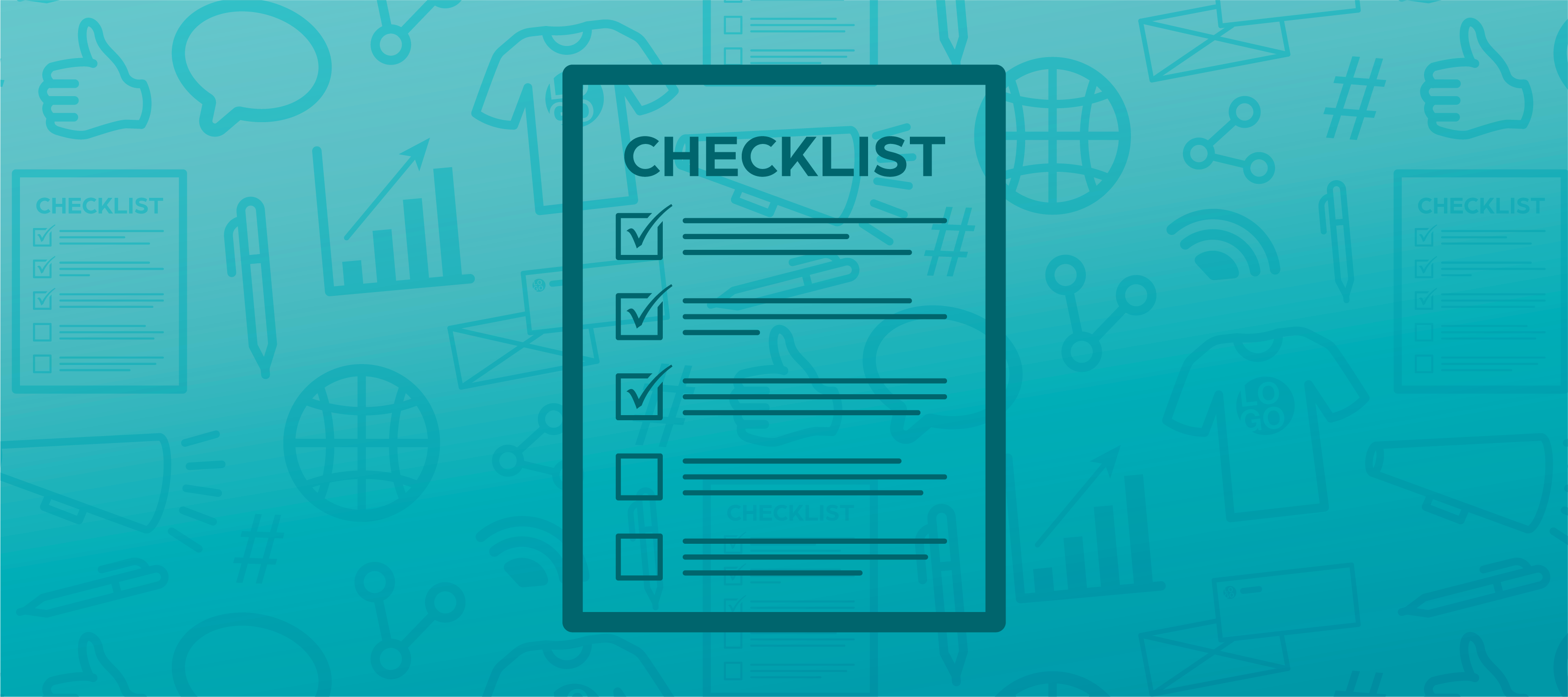When you’re starting (or possibly re-starting) your marketing efforts, it’s important to have a plan in place. If you’re new to marketing, though, it may be challenging to know where that plan should start. That’s what this post is for! Below we’ll give you a marketing checklist that you can use for your small business. There’s even a handy PDF printout at the end. Ready to plan your small business’s marketing strategy? Here we go!
Know Your Audience
Before planning anything else, you need to identify your target audience. If you don’t know to whom you are marketing, you will struggle to find an effective strategy. Instead of throwing spaghetti at the wall and going with what sticks, take time to research your customers. Are you targeting Gen Z with your product? Find out where they spend most of their time (hint: TikTok is a good place to start). Are you trying to reach stay-at-home moms in their early-to-mid 30s? You may have a better time reaching them through radio or parenting programs. No matter who your target audience is, you need to understand what they want, what they don’t want, how to reach them, and how to show them your expertise.
Know Your Brand
Another important early step when marketing your small business is to know your brand. You don’t need to have every single teeny tiny detail plotted out from the beginning, especially if your small business is very small, but you should strive to have some guidelines in place.
- What does your logo look like? How does this impact the rest of the visuals associated with your brand?
- Should your brand have a more serious tone of voice or a more casual tone? (Knowing your audience can help you decide this.)
- Where can you apply your brand? (giveaways, signs, printed pieces, etc.)
Having your brand defined (even loosely defined) will help the rest of your marketing efforts to stay clear and consistent. And in branding, consistency is king.
Know Your Budget
This one is pretty self-explanatory. It’s important for a business of any size to have funds designated for marketing purposes. This can include printing costs, promotional item costs, purchasing a domain, set up costs for a website and graphics, and event participation fees.
It’s important to note that there are ways to market your business for little-to-no cost. When you’re just starting out, that can be a good way to go. Most social channels (Facebook, Instagram, TikTok, etc.) have the option to set up free business pages and only require payment when you want to utilize paid advertising features.
Make a Website
Whether it’s a business, a product, a service, or facts about llamas, most people will turn to search engines like Google when they want to find new things. You can take advantage of some of that online traffic by having a website for your small business. Websites are an important early part of marketing because they help customers find your contact info, get an idea about your products or services, and share your business with their friends and family. You can point people to your website online and in person through QR codes, hyperlinks, and URLs.
(Do you really need a website? Yes. More on that here.)
Pick Your Social Platforms
After you’ve researched your audience, planned your brand, determined your budget, and set up a website, it’s time to expand to more channels. Generally speaking, it’s best to focus on building one or two social platforms and adding more later. Knowing your audience and understanding your brand will help you pick your social platform(s).
Here’s quick rundown of user demographics for each platform.
| Social Media | Gender | Age Range |
| YouTube | Even split between men and women | Almost all ages present |
| Even split between men and women | Primarily Millennials and up | |
| Skews a little more towards women | Primarily Millennials and Gen X | |
| TikTok | Even split between men and women | Almost all ages present, heavily Gen Z |
| Skews a little more towards men | Primarily Millennials and Gen X |
Look for Offline Marketing Opportunities
Not all business is conducted online and not all marketing needs to be either. Depending on the goals of your small business, marketing offline can be just as effective too. Look for local events that you can sponsor or attend. Consider advertising options like billboards, posters, radio spots, and newspaper ads. Connect with local news reporters so they can site you as a source for relevant articles. There are lots of opportunities to promote your small business in the real world, so don’t be afraid to expand your efforts beyond the internet.
Take Risks and Have Fun!
The last item on this marketing checklist is more of a reminder than anything else. Remember to take risks with your marketing and to have fun with it. Marketing can be hard to quantify and it can be even harder to predict. Sometimes the riskier option is the better one. At the end of the day, you’re marketing your small business so that you can stand out from other businesses. Don’t be afraid to do something against the grain and grab people’s attention.
Call Bold River Marketing for help!
We’re here to make your marketing journey easier. Starting and running a small business can be exciting, but it can also be a little daunting. Bold River Marketing offers services in graphic design, social media management, web design, videography, and photography. We can get you set up with a logo and brand, a website, a social media presence, and content to use across the internet. Call us for more information!

